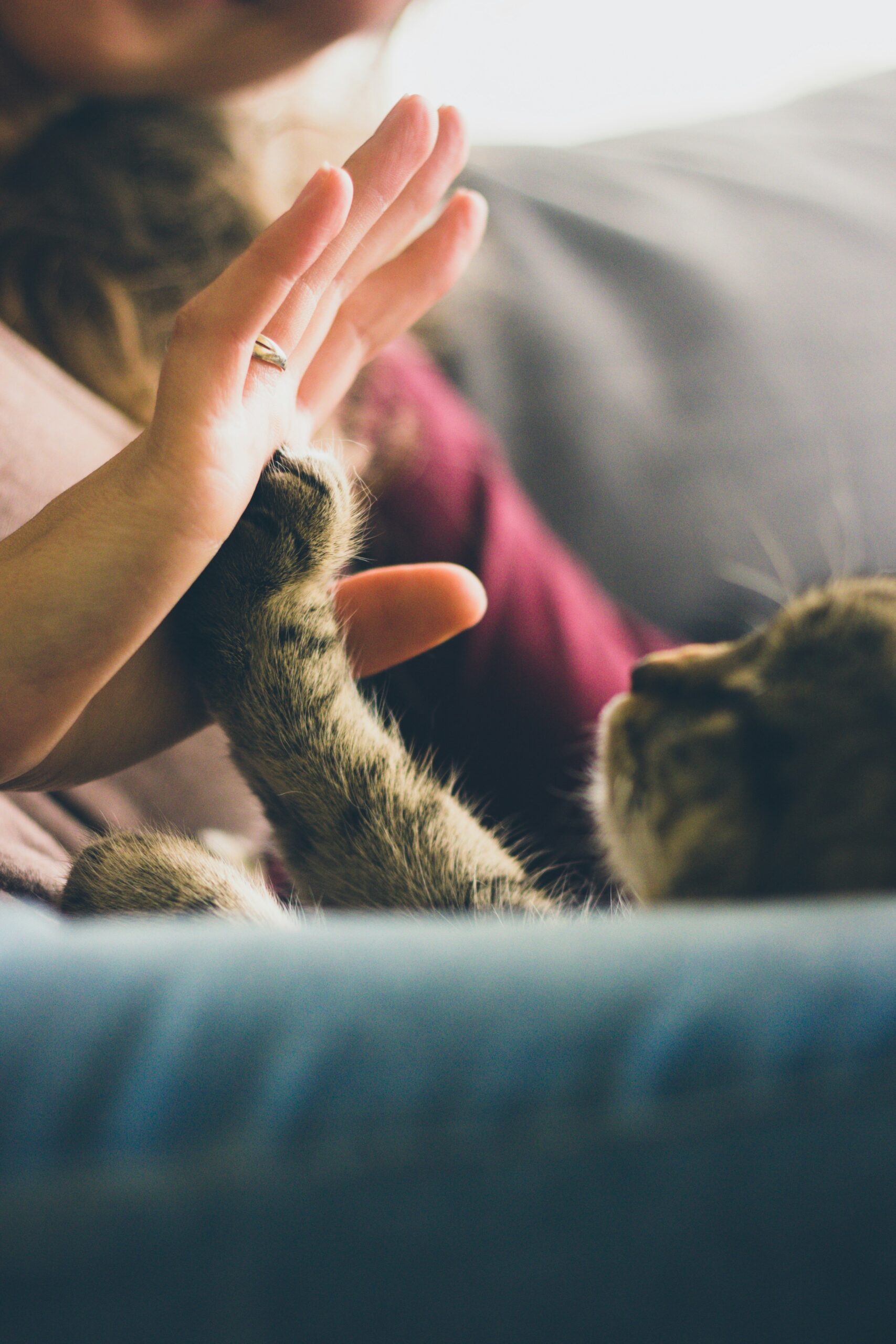Dealing with Pet Separation Anxiety: Strategies for a Happier Pet
Understanding Pet Separation Anxiety
Pet separation anxiety is a behavioral condition characterized by extreme distress and anxiety that pets experience when left alone or separated from their primary caregivers. It manifests through various signs and symptoms, which can include excessive barking or whining, destructive behavior such as chewing or scratching, attempts to escape, pacing, and in severe cases, self-injury. In addition, some pets may experience physical symptoms like trembling, salivating, or even gastrointestinal upset.
Several factors can contribute to the development of separation anxiety in pets. Certain breeds, particularly those known for their close-bonding nature with humans, such as Labrador Retrievers and Border Collies, are more susceptible. Puppies and young dogs are often more anxious when left alone, as they are still in the early stages of learning independence. Similarly, pets with a history of abandonment, frequent rehoming, or traumatic experiences are at a higher risk of developing this condition.
The emotional impact of separation anxiety on pets can be profound, leading to a constant state of stress when they anticipate or experience being left alone. This prolonged stress can negatively affect their overall well-being, resulting in both behavioral and health issues. Furthermore, the stress experienced by pet owners is equally significant. Observing a distressed pet, coupled with the damage and messes caused by anxiety-driven behaviors, can lead to feelings of frustration, guilt, and helplessness.
Understanding the root causes and symptoms of pet separation anxiety is crucial for developing effective strategies to mitigate its effects. By recognizing the signs early and addressing the underlying factors, pet owners can help their furry companions lead happier, stress-free lives. Addressing pet separation anxiety not only enhances the quality of life for pets but also alleviates the emotional burden on owners, fostering a healthier and more harmonious relationship.
Identifying the Root Causes
Understanding the underlying reasons behind pet separation anxiety is crucial for developing effective strategies to alleviate it. Pets, much like humans, can experience anxiety due to various factors. Recognizing these root causes helps pet owners tailor their approach to meet the specific needs of their furry companions.
One significant factor contributing to separation anxiety in pets is a change in routine. Pets, particularly dogs and cats, thrive on consistency and predictability. Sudden alterations to their daily schedule, such as changes in work hours, moving to a new home, or the introduction of a new family member, can trigger anxiety. These changes disrupt their sense of security and can lead to distress when left alone.
Trauma from past experiences also plays a critical role. Pets that have experienced abandonment, neglect, or abuse may develop separation anxiety as a result of their traumatic past. These animals often have heightened sensitivity to being left alone, fearing a recurrence of the negative experiences they previously endured. Recognizing this history is essential in addressing their needs empathetically and providing additional support.
Lack of socialization is another contributing factor. Pets that have not been properly socialized during their formative years may struggle with anxiety when separated from their owners. This lack of exposure to different environments, people, and other animals can make them overly dependent on their primary caregivers, leading to distress when left alone. Socialization plays a key role in helping pets build confidence and resilience.
Moreover, some pets may have a genetic predisposition to anxiety. Certain breeds are more susceptible to separation anxiety due to their genetic makeup. For instance, breeds that are known for their attachment to humans, such as the Labrador Retriever or the Border Collie, are more likely to exhibit signs of separation anxiety. Understanding the hereditary aspect can help in utilizing breed-specific strategies to manage their anxiety effectively.
In conclusion, accurately identifying the root causes of separation anxiety in pets is the first step towards implementing effective management strategies. By acknowledging factors such as changes in routine, trauma from past experiences, lack of socialization, and hereditary issues, pet owners can better address their pets’ needs, fostering a happier and healthier relationship.
Recognizing the Symptoms
Pet separation anxiety manifests in various ways, making it crucial for pet owners to recognize the telltale signs and understand their implications. One of the most evident symptoms is destructive behavior, where pets may chew on furniture, dig at doors, or destroy household items. This behavior often stems from the pet’s intense stress and attempts to cope with their owner’s absence.
Another common manifestation of separation anxiety is excessive vocalization, such as barking, howling, or whining. Unlike normal vocal expressions, these sounds are usually prolonged and occur predominantly when the pet is left alone. This incessant noise serves as a clear indicator of their distress and a cry for attention.
In addition to vocal and destructive behaviors, separation anxiety can cause pets to urinate or defecate in inappropriate places, even if they are otherwise house-trained. This occurrence is not due to a lack of training but rather an anxious response to feeling abandoned. Owners should be mindful not to punish their pets for these accidents, as it can exacerbate their anxiety.
Furthermore, signs such as pacing, drooling, and trembling are more subtle but equally significant indicators of separation anxiety. Pet owners might observe their pets walking back and forth, drooling excessively, or shaking as they prepare to leave the house or upon their return. These physical symptoms reflect a pet’s underlying distress.
To better understand and address pet separation anxiety, it’s important for owners to observe and document these behaviors. Keeping a detailed log of incidents, including the time of day, duration of absence, and specific behaviors exhibited, can provide valuable insights. This information can be shared with veterinarians or pet behavior specialists to develop effective strategies for managing and alleviating the pet’s anxiety.
By recognizing and documenting these signs, pet owners can take proactive steps towards ensuring their pets remain happy and calm, despite their time spent alone.
Preventive Measures: Building Independence
Raising pets to be independent is crucial for minimizing separation anxiety. One of the key strategies is to implement training techniques that encourage self-reliance. For instance, incorporating reward-based training can significantly enhance a pet’s ability to cope without constant human presence. Through positive reinforcement, pets learn that brief periods of solitude can yield favorable outcomes, transforming their perspective on being left alone.
Socialization from a young age also plays a pivotal role in fostering independence. Exposing pets to various environments, people, and other animals early on can decrease their anxiety levels and increase their confidence. Well-socialized pets are usually more adaptable and can handle changes in their routine more effectively. This adaptability reduces the likelihood of developing separation anxiety.
Creating a safe and comfortable environment for your pet further supports their independence. A designated space equipped with familiar items such as toys, bedding, and even pieces of your clothing can provide comfort. These items can serve as positive distractions that occupy your pet’s mind when alone. Additionally, maintaining a consistent daily routine reinforces predictability, helping pets understand that their owners will consistently return.
Gradually increasing the duration pets are left alone is another effective method. Start with short intervals and slowly extend the time over several weeks. This gradual process helps pets acclimate to solitude without becoming overwhelmed. It’s also beneficial to practice departure routines that aren’t highly noticeable. For example, calmly leaving the house without making a big deal reduces the associated anxiety trigger.
By implementing these preventative measures, pet owners can significantly decrease the likelihood of separation anxiety. Training for independence, thorough socialization, a secure environment, and incremental alone time are all integral components of a comprehensive approach to raising self-sufficient and content pets.
Creating a Safe and Comfortable Space
Addressing pet separation anxiety begins with establishing a safe and comfortable space for your pet. This space acts as a sanctuary where your pet can retreat to when they feel anxious due to your absence. A well-designed safe space can significantly diminish anxiety symptoms and promote a sense of security.
Crate training is a foundational step in creating such a sanctuary. Crates, when used correctly, can mimic a den-like environment that many pets find inherently comforting. It’s crucial to introduce the crate gradually and ensure it’s associated with positive experiences, such as feeding times or play sessions. This fosters a sense of safety and belonging, transforming the crate into a secure refuge rather than a confining space.
Incorporating calming toys and familiar items can further ease anxiety. Interactive toys or puzzle feeders can keep pets engaged and distracted, making the time alone more manageable. Additionally, items imbued with your scent, such as an old shirt or blanket, can provide comfort and reassurance in your absence, bridging the emotional gap.
Engaging the auditory senses is another effective tactic. White noise machines or specially designed calming music can produce a soothing effect, masking external noises that might otherwise trigger anxiety. These auditory aids can create a tranquil atmosphere, helping to stabilize your pet’s emotions. Studies have shown that specific types of music, such as classical compositions, have a particularly calming influence on pets. This technique can be a simple yet potent adjunct to other anxiety-reducing strategies.
In summary, creating a secure and comforting space involves thoughtful application of crate training, strategic use of calming toys, and the integration of soothing auditory stimuli. These elements collectively form a protective and reassuring environment that can significantly mitigate the adverse effects of pet separation anxiety, leading to a happier and more relaxed pet.
Behavioral Training and Desensitization
Dealing with pet separation anxiety often requires a multi-faceted approach, with behavioral training and desensitization techniques playing a critical role. Understanding these methods can significantly alleviate the anxiety your pet experiences when left alone.
Desensitization is a gradual process designed to reduce your pet’s fear response. To begin, expose your pet to departure cues in a controlled and non-threatening manner. For instance, you might start by picking up your keys without leaving the house. Over time, incrementally increase the duration of your absence, allowing your pet to become accustomed to these cues without experiencing distress. The key is to ensure that these cues no longer signal panic but become normal parts of your routine.
Counter-conditioning complements desensitization by replacing negative associations with positive ones. This method involves pairing the anxiety-inducing trigger, such as your departure, with something enjoyable, like a favorite toy or treat. The aim is to create a positive emotional state in the pet’s mind when faced with what was previously a source of anxiety. By leveraging the power of positive reinforcement, pets can begin to see your departure as an opportunity for a reward rather than an impending moment of solitude.
Patience and consistency are crucial in behavioral training. Changes in behavior don’t happen overnight; it requires committed effort over time. Regular, short sessions are often more effective than sporadic, lengthy training periods. Stick to a consistent schedule to help your pet understand and adapt to the new patterns and routines.
In severe cases of separation anxiety, seeking the assistance of professional trainers or animal behaviorists may be necessary. These experts can develop a personalized training plan tailored to your pet’s specific needs. They can also provide guidance and support throughout the process, ensuring that both you and your pet are on the right track to a stress-free separation.
The Role of Exercise and Mental Stimulation
Regular physical exercise and mental stimulation are crucial in managing pet separation anxiety. Ensuring that your pet receives adequate physical activity can significantly minimize stress levels and mitigate symptoms of anxiety. Physical activities such as daily walks, play sessions, and structured exercise routines help to expend energy, which in turn can reduce nervousness and restlessness when they are left alone.
Daily walks are a fundamental component of physical exercise. A simple walk around the neighborhood provides your pet with essential physical activity. Moreover, it offers an opportunity for them to explore new sights and smells, adding a layer of mental stimulation that can be beneficial in preventing boredom and anxiety.
Interactive play sessions also prove valuable; engaging with your pet through games like fetch, tug-of-war, or chase stimulates both their body and mind. These activities not only tire your pet out physically but also require them to think, increasing their overall mental engagement. Structured exercise routines, such as agility training or obedience drills, can offer an excellent way to channel your pet’s energy while simultaneously improving their discipline and responsiveness.
In addition to physical activities, mental stimulation plays an essential role in curbing separation anxiety. Interactive toys, such as puzzle feeders and treat-dispensing toys, are excellent tools to keep your pet entertained and mentally active. Such toys challenge your pet to solve puzzles or manipulate objects to retrieve treats, keeping their mind occupied in your absence. Rotating these toys to maintain novelty and interest can further enhance this effect.
A tired pet, both physically and mentally, is less likely to exhibit signs of separation anxiety. By combining physical exercise and mental stimulation into your pet’s daily routine, you can create a more balanced and content pet, making periods of separation less stressful for both of you. Establishing this routine can provide long-term benefits, fostering a happier and healthier companion.
Seeking Professional Help
Dealing with severe pet separation anxiety can be challenging for pet owners, and in some cases, professional intervention becomes essential. Consulting a veterinarian is often the first step in addressing these issues. A comprehensive evaluation by a veterinarian can help identify any underlying medical conditions that may contribute to the anxiety. Additionally, veterinarians can provide valuable guidance on potential treatments, including prescription medications that might alleviate severe symptoms.
Enlisting the expertise of an animal behaviorist can also be crucial. Animal behaviorists specialize in understanding the psychological patterns and behaviors of pets. They are equipped to create personalized behavior modification plans tailored to address the specific triggers and manifestations of your pet’s anxiety. These professionals often employ techniques such as desensitization and counter-conditioning, which can significantly reduce anxiety over time when implemented consistently.
In some cases, professional trainers who focus on behavior training can supplement the efforts of veterinarians and behaviorists. These trainers offer practical, hands-on strategies to modify your pet’s response to being alone. Using positive reinforcement and other scientifically-backed methods, they can help your pet develop coping mechanisms that reduce their anxiety levels.
Moreover, there are natural remedies that might be considered under veterinary guidance. Options such as pheromone diffusers, calming supplements, or herbal remedies could be recommended as part of a holistic approach. It is important that any natural remedy be evaluated and approved by a veterinarian to ensure it is safe and effective for your pet’s specific needs.
Integrating professional help into your strategy for managing pet separation anxiety can be pivotal. By working with veterinarians, animal behaviorists, and professional trainers, you can develop a comprehensive, multi-faceted plan. This plan should be tailored to your pet’s unique needs, ensuring a path to a happier and more relaxed companion.















Post Comment